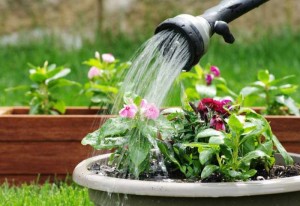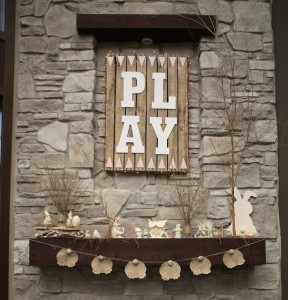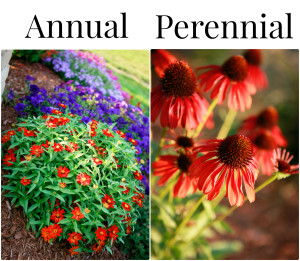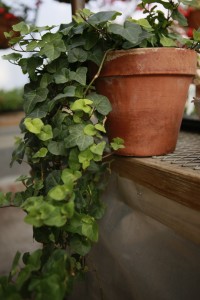Browse Every Blog, post, picture, and video Casey has made.
‘The Wilt’ from Over Watering
Are you over watering your plants?
Do you sometimes suffer with wilted plants, even though you just watered them? You have to then make another trip out to your garden center to replace them because they died. You did everything you could. You watered them everyday, like you have been taught. Well, guess what, you may be over watering!
 Once we get everything planted and looking beautiful in the spring, we are adamant about keeping those plants looking that way all summer. The biggest mistake most of us make is over watering.
Once we get everything planted and looking beautiful in the spring, we are adamant about keeping those plants looking that way all summer. The biggest mistake most of us make is over watering.
We are programmed to think that every day we need to be out there watering our plants. In most cases this is true, but doesn’t pertain to all plants. Especially when plants are newly planted.
When we plant plants in a planter or basket, there is twice the amount of dirt to plant roots. So when we water freshly planted planters or baskets, there are only so many roots absorbing that water. So in the beginning you may only need to water every other day or every two days, depending on how much sun it gets.
As the roots of the plants grow, they expand into that soil below. With more root growth, becomes more water absorption. With more water absorption, becomes more watering. By mid summer, you will notice that you will need to water once a day, like we are programmed.
In the beginning, is when most people lose their plants to over watering. One of the biggest signs of over watering is when a plant looks wilted. Now, this can be confusing. We are taught that when a plant wilts, it needs more water. The only way you can truly tell what a flower needs is by sticking your finger down in the dirt to feel the soil. If it feels really dry, then it is wilted because it needs water. If the soil is wet or damp, it means that your flower is becoming over watered.
If the soil is wet or damp, all you can do at this point is let it dry out a little bit, and hope it comes out of the wilted stage. Most of the time, if a flower is over watered, and has hit the wilted stage, it won’t come back.
When a flower is over watered and goes through the wilted stage, take it out of the planter or basket. Take a look at the roots. You may notice, what I call, root rot. The roots are no longer white. They are brown or yellow in color, and the roots don’t stay in tact. They just fall apart. This means the flower is done. There is no bringing it back. If the roots are still white in color and intact, replant it into the pot. It should pop back.
If you are very careful with how much you water, and still notice this over watering problem, then be sure to check that your planter or basket has drainage holes in the bottom. This is a requirement for excess water to drain out, otherwise it is just like setting your plants in a bucket of water. Of course, we know what that result would be.
Another way that plants get over watered, is when you try to over compensate on the watering after allowing your plant to get too dry. We have all done it once before. You leave for work early and come home to a dry wilted basket or planter, and our first instinct is to water it. We go as far as watering it so much, we are sure it won’t dry out for a week. Well, guess what, you can over water a dry plant.
When a plant is dry and wilted, give it the usual amount of water you normally would. Don’t over flood it in panic. When you give it just enough water, it should come back out of that wilt. It will result in a few brown leaves, but pick those off and carry on. If you notice 1-2 hours go by, and the wilt isn’t gone, don’t give it more water. Just leave it. It just may have been too far gone, but still give it more time. If you give it more water, this will result in over watering. There is no coming back from that.
As you can see, over watering is one of the biggest killing culprits amongst plant owners. I have shared this in hopes that I can save a few of your plants and a few bucks for you this spring and summer. Just remember, stick your finger down in that dirt and feel the soil. Not all planters or baskets are going to need daily watering when they still have a small root system. Also, be sure your planters and baskets have drainage holes. Lastly, enjoy your plants for much longer with your new knowledge on over watering. Happy Planting!
Take the Old & Make it New
Take the Old & Make it New
Sick and tired of looking at your old outdated furniture? Make some of your old pieces look new again by following these 5 easy steps!


Step 1: Repair anything that is broken, and take off hardware.
Step 2: Clean and wipe down with soap and water.
Step 3: Apply 2 layers of Primer. (or more if needed)
Step 4: Apply 2 layers of desired paint color. (or more if needed)
Step 5: Attach fresh new hardware.
 Customizing your own furniture pieces will allow you to match your furniture to your home decor. Every time someone comes through our door, they always ask about this dresser. They always love it and want to know where we got it. They are always so surprised when we tell them that it is just an old piece of furniture made new again!
Customizing your own furniture pieces will allow you to match your furniture to your home decor. Every time someone comes through our door, they always ask about this dresser. They always love it and want to know where we got it. They are always so surprised when we tell them that it is just an old piece of furniture made new again!
How to create a ‘Monster Basket’
How to create a ‘Monster Basket’
Every Spring you get excited to go to your local greenhouse to pick out the perfect basket, or to pick out flowers to create your own. By mid summer, you start looking at your basket, and it just isn’t doing much of anything, other than just growing longer and lankier.

Would you like to learn the secret to keeping your basket bushy all season long? What if I told you that I could teach you that secret in under 5 minutes?
Guess what? I can! Just click on my video link. In just under 5 minutes I will teach you how to keep your basket from getting lanky! I will teach you how to create a ‘Monster Basket’!
Decorating with Naturals
Decorating with Naturals
 Imagine this. It’s a beautiful day out. You are standing outside with your eyes closed, surrounded only by nature. It is warm and sunny with a slight breeze that smells like spring. You can hear the breeze blowing through the tall grass and you can hear water trickling from the vanished winter ice.
Imagine this. It’s a beautiful day out. You are standing outside with your eyes closed, surrounded only by nature. It is warm and sunny with a slight breeze that smells like spring. You can hear the breeze blowing through the tall grass and you can hear water trickling from the vanished winter ice.
At this point, you become one with nature.
Now wouldn’t it be nice to feel that way in your home?
If you are going to go to the store and buy decorations, remember this, buy pieces that can be used at any time of the year. Such as, glass canisters, vases, jars etc. As long as it is see through, you can accent anything in it during any time of the year.
 In spring we see a lot of old tall weeds, grasses and bare branches. Lets bring these in the house. That way we can feel as invigorated inside, as we do outside. You can place these in those glass items I shared with you.
In spring we see a lot of old tall weeds, grasses and bare branches. Lets bring these in the house. That way we can feel as invigorated inside, as we do outside. You can place these in those glass items I shared with you.
You want it to feel more like easter? Then add a few bunny accents with pastels. Change out a couple of pillows. That always changes the look of a room. Are you on a budget? Then just buy a roll of pastel ribbon and tie a beautiful ribbon around your throw pillows. I do this at Christmas time. I have some cream pillows and burlap pillows. I just tie red ribbons around the pillows so I don’t have to go out and buy all new pillows.
Change out a couple of pillows. That always changes the look of a room. Are you on a budget? Then just buy a roll of pastel ribbon and tie a beautiful ribbon around your throw pillows. I do this at Christmas time. I have some cream pillows and burlap pillows. I just tie red ribbons around the pillows so I don’t have to go out and buy all new pillows.
Want a grand centerpiece for your kitchen table?  Cut a bare tree branch and place it into a big glass vase. Lastly, tie a cute ribbon around the vase. I used burlap ribbon, but you could use a pretty pastel ribbon as well. You can just change the ribbon with every season.
Cut a bare tree branch and place it into a big glass vase. Lastly, tie a cute ribbon around the vase. I used burlap ribbon, but you could use a pretty pastel ribbon as well. You can just change the ribbon with every season.

Do you have an Easter village?

Stop paying money for village accents and create your own with naturals. Pull some old long grass and hot glue it to a piece of paper. There you have it, your Easter village floor.
Using a thin branch, cut it into a few pieces, and create a bonfire for your bunnies.
Pick tall old weeds that are branch like, and bundle them together. Place them in a tiny glass jar and use
these as mini trees in your easter village or just as an accent on your mantle.
Decorating with naturals will give your home an invigorating feel. Just watch how many of your guests compliment you on your new home decor.


Annual VS Perennial
Annual VS Perennial
What’s the difference?
Lets just keep this simple. I will give you all the basic knowledge you need to get started!
An annual is a plant that you have to plant every year. They do not survive the winter.
A perennial comes back every year.
How do you know if it’s an annual or perennial?
Every flower has a zone number attached to it. It will say Zone 2 or Zone 3, and so on. You will find this on the tag that is stuck in the pot or flat.
Wisconsin is Zone 5, but Zone 4 is an even hardier perennial for us. You could get away with a Zone 6 perennial, but keep in mind, it may not come back. What may help a Zone 6 perennial come back, is placing it in a more protected area close to the house, or covering it with hay in the fall.
Sometimes on a tag that says it’s a perennial, always be sure to check the zone number on it. A lot of times, tag companies just put out a general tag, so that plant my be a perennial somewhere else, but not for our zone.
Most garden centers will have their annuals and perennials separated from each other to make shopping easier for you. That way you don’t have to constantly be reading the small print on a tag.
If you are going out shopping for perennials this year, be sure to ask someone who works at the garden center where their perennials are located. This way you won’t be disappointed next spring when you are waiting for them to pop up or turn green.
Shipped In VS Homegrown
Shipped In VS Homegrown
 Have you ever been to a garden center and seen all of those tall carts packed full with plants? These plants always seem perfect in size and height. All you want to do is hoard the carts, because you know they are fresh off the truck.
Have you ever been to a garden center and seen all of those tall carts packed full with plants? These plants always seem perfect in size and height. All you want to do is hoard the carts, because you know they are fresh off the truck.
You may want to put the breaks on that impulse. What I am about to tell you is a secret they don’t want you to know.
They spray them with growth retardant!
Growth retardant stalls a plant from growing for up to 4-6 weeks!!!
The reason they spray these plants, is so they don’t grow too large. Then they can fit more on the truck that they deliver these plants in. That way they save money, while you suffer from watching your beautiful plants do nothing for 4-6 weeks!
When you go to a greenhouse where they advertise that their products are home grown, you will notice a difference. Not all plants are the same height, or width. By the end of the selling season, some things may even seem ‘overgrown’. That’s because they do not spray growth retardants on their plants. So as soon as you plant these plants, they take off like crazy! Therefore, you get to enjoy your hard work instantly.
Now that I have spilled a big secret, you will be able to tell a difference in how much healthier homegrown plants look compared to shipped in plants. When you go shopping for your flowers and vegetables this year, pay attention to garden centers who offer homegrown. You will be a much happier garderner!








